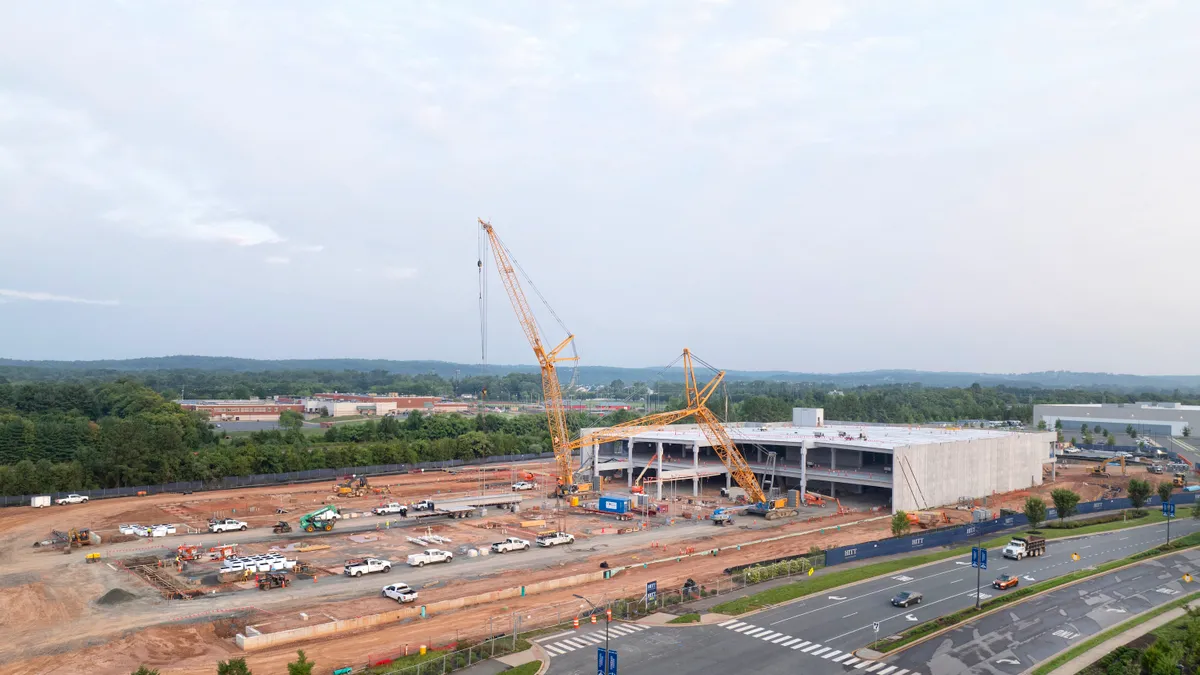Arizona Public Service has about 10 GW in pending interconnection requests from data centers, but the utility cannot commit to serving them because it would put existing customers at risk of having poor reliability, according to Jose Esparza, the utility’s senior vice president of public policy.
Planned data centers also raise cost issues, Esparza said Sunday during a panel discussion on rapid demand growth and risk management at the National Association of Regulatory Utility Commissioners’ annual meeting in Anaheim, California. “We are super concerned about spreading those costs onto our residential customers,” he said.
APS is exploring options for new tariffs setting the terms for those interconnections, according to Esparza.
Also, Maricopa County, Arizona’s largest and fastest growing county, has exceeded the ambient air nitrogen oxides limit set by the Environmental Protection Agency, Esparza said. At the same time, while APS plans to add 3.5 GW of renewables by 2031, it expects it will also need new gas-fired generating capacity, according to Esparza.
APS expects its peak load will jump 40% by 2031, from about 8,212 MW this year, driven by data centers, electric vehicles, mining and advanced manufacturing, Esparza said, noting the Phoenix-based utility plans to close its last coal-fired power plant in the same year.
“That's a lot of resources to bring online with all the growth that we have coming in Arizona, and that's going to take a lot of money,” he said. APS expects to spend about $2 billion annually in coming years on capital investments.
As a result, APS aims to move away from periodic rate cases to a formula rate structure that would include annual true ups, providing more gradual rate increases for its customers, according to Esparza.
The Arizona Corporation Commission held a workshop last month on possibly changing its ratemaking approach.
States seek load growth solutions
When trying to balance affordability in a period of rapid demand growth, regulators should consider rethinking the return on equity and capital structure they approve for utilities, according to another panelist, Michael Moody, the Michigan Department of Attorney General’s special litigation division chief. They are “huge” drivers of customer costs, with equity costing about three times as much as debt, he said during the panel discussion.
In addition, energy efficiency, virtual power plants and time-of-rates are options for quickly meeting growing electricity demand while saving money, Moody said.
In response to rapid data center growth, the Virginia State Corporation Commission plans to hold a technical conference on Dec. 16 to explore how increasing numbers of large-use retail electric customers affect the state’s utilities, ratepayers and power grid, according to panelist and SCC Chairman Jehmal Hudson.
“When it comes to adding transmission and generation capacity, we're trying to make a determination: how do we fulfill those needs to data centers, but also still keep the lights on in the commonwealth?” Hudson said at the NARUC meeting.
The workshop will explore whether the SCC should establish a regulatory framework for large-scale consumers, including if they should be directly assigned transmission and generation costs under a new customer class, according to Hudson.
“This issue is moving very, very fast,” Hudson said.
Julie Fedorchak, North Dakota Public Service Commissioner and representative-elect, said Sunday that after a PSC-led conference in August that she is encouraging the state to develop “off grid” generating supplies for data centers and other large loads, which could be available more quickly than traditional power supplies. The new supplies could later be connected to the grid, she said.















